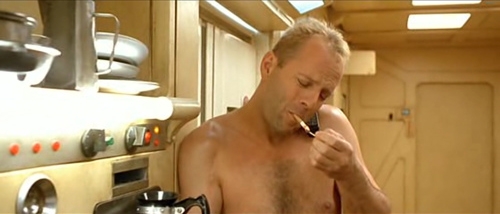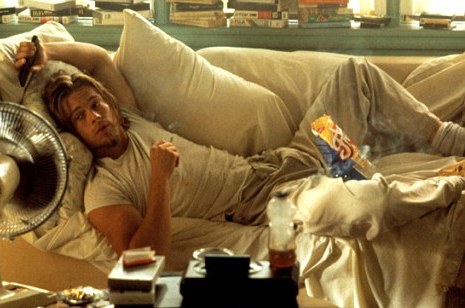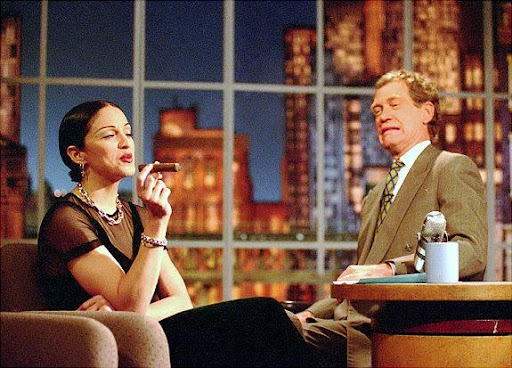Tobacco Products
 4:11 AM
4:11 AM
 Kat
, Posted in
Chewing tobacco
,
smokeless tobaccos
,
smoking tobacco
,
tobacco products
,
0 Comments
Kat
, Posted in
Chewing tobacco
,
smokeless tobaccos
,
smoking tobacco
,
tobacco products
,
0 Comments
Snuff is a generic term for fine-ground smokeless tobacco products. This is often called “Scotch Snuff”, a folk-etymology derivation of the scorching process used to dry the cured tobacco by the factory.
The second, and more popular in North America, variety of snuff is moist snuff, or dipping tobacco. American Moist snuff is made from dark fire-cured tobacco that is ground, sweetened, and aged by the factory.
It has been suggested by The Economist magazine that the ban on smoking tobacco indoors in some areas, such as Britain and New York City, may lead to a resurgence in the popularity of snuff as an alternative to tobacco smoking.
Hookah
History
The Hookah was invented in India (present day Pakistan) in the court of the Mughal emperor Akbar (1542 – 1605 AD).Following the European introduction of tobacco to India, Hakim Abul Fateh Gilani a descendant of Abdul Qadir Al-Gilani came from Baghdad to India who was later a physician in the court of Mughal raised concerns after smoking tobacco became popular among Indian noblemen, and subsequently envisaged a system which allowed smoke to be passed through water in order to be ‘purified’. Gilani introduced the hookah after Asad Beg, then ambassador of Bijapur, encouraged Akbar to take up smoking.Following popularity among noblemen, this new device for smoking soon became a status symbol for the Indian aristocracy and gentry.
Culture
Arab world
In the Arab world, people smoke it as part of their culture and traditions. Social smoking is done with a single or double hose, and sometimes even more numerous such as a triple or quadruple hose in the forms of parties or small get-togethers. When the smoker is finished, either the hose is placed back on the table signifying that it is available, or it is handed from one user to the next, folded back on itself so that the mouthpiece is not pointing at the recipient. It has been recorded that the Arabs are the biggest shisha smokers in the World and have the most shisha Cafes.[citation needed]
Most cafés (Arabic: مقهىً, transliteration: maqhah, translation: coffeeshop) in the Middle East offer shishas. Cafés are widespread and are amongst the chief social gathering places in the Arab world (akin to public houses in Britain). Some expatriate Britons arriving in the Middle East adopt shisha cafés to make up for the lack of pubs in the region, especially where prohibition is in place.
Iran
In Iran, the hookah is known as a ghalyun (Persian: قليان, قالیون, غلیون, also spelled ghalyan, ghalyaan or ghelyoon). It is similar in many ways to the Arabic hookah but has its own unique attributes. An example is the top part of the ghalyoun called ‘sar’ (Persian: سر=head), where the tobacco is placed, is bigger than the ones seen in Turkey. Also the major part of the hose is flexible and covered with soft silk or cloth while the Turkish make the wooden part as big as the flexible part.
Each person has his own personal mouthpiece (called an Amjid) (امجید), Amjid is usually made of wood or metal and decorated with valuable or other stones. Amjids are only used for their fancy look. However, all the Hookah Bars have plastic mouth-pieces.
Use of water pipes in Iran can be traced back to the Qajar period. In those days the hoses were made of sugar cane. Iranians had a special tobacco called Khansar (خانسار, presumably name of the origin city). The charcoals would be put on the Khansar without foil. Khansar has less smoke than the normal tobacco. Nasser al-Din Shah Qajar, Shah of Persia (1848-1896) is reputed to have considered a hookah mouthpiece pointed at him an insult.
The smoking of hookahs is very popular with young people in Iran, and many young people can be seen smoking them in local tea shops.
The hookah was, until recently, served to all ages; Iranian officials have since passed a law forbidding its use by those under 20.
Israel
The Israeli the term for hookah is nargila. Nargila-smoking is prevalent among Mizrahi Jewish immigrants from Iran, Iraq, Turkey, and Yemen, Morocco,(collectively known as Mizrahi Jews). Nargilas are becoming increasingly popular in Israel, particularly among tourists. Shops selling paraphernalia can be found on most streets and markets. In 2005, due to an increase in use among youth, a campaign was launched by The Israel Cancer Association warning of the hazards of nargila smoking, and the IDF has forbidden the use of nargilas by soldiers within its bases.
India
The concept of hookah originated In India, once the province of the wealthy, it was tremendously popular especially during Mughal rule. The hookah has since become less popular; however, it is once again garnering the attention of the masses, and cafés and restaurants that offer it as a consumable are popular. The use of hookahs from ancient times in India was not only a custom, but a matter of prestige. Rich and landed classes would smoke hookahs.
Tobacco is smoked in hookahs in many villages as per traditional customs. Smoking a tobacco-molasses shisha is now becoming popular amongst the youth in India. There are several chain clubs, bars and coffee shops in India offering a wider variety of mu‘assels, including non-tobacco versions.
Koyilandy, a small fishing town on the west coast of India, once made and exported hookahs extensively. These are known as Malabar Hookhas or Koyilandy Hookahs. Today these intricate hookahs are difficult to find outside of Koyilandy and not much easier to find in Koyilandy itself. The government looks down on hookah smoking. There have been numerous raids and bans recently on hookah smoking, especially in Gujarat
Pakistan
In Pakistan, although traditionally prevalent in rural areas for generations,hookahs have become very popular in the cosmopolitan cities. Many clubs and cafes are offering them and it has become quite popular amongst the youth and students in Pakistan. This form of smoking has become very popular for social gatherings, functions, and events. There are a large number of cafes and restaurants offering a variety of hookahs. Karachi has seen a growth in this business.
United States and Canada
Recently many cities, states and counties have implemented indoor smoking bans. In some jurisdictions, hookah businesses can be exempted from the policies through special permits. Some permits however, have requirements such as the business earning a certain minimum percentage of their revenue from alcohol or tobacco.
In cities with indoor smoking bans, hookah bars have been forced to close or switch to tobacco-free mu‘assel. In many cities though, hookah lounges have been growing in popularity. From the year 2000 to 2004, over 200 new hookah cafes opened for business, most of which are targeted at a young-adult age group, nd were particularly near college campuses or cities with large Middle-Eastern communities. This activity continues to grow in popularity within the post-secondary student demographic.
Chewing is one of the oldest ways of consuming tobacco leaves. Modern chewing tobacco is produced in three forms: twist, plug, and scrap. A few manufacturers in the United Kingdom produce particularly strong twist tobacco meant for use in smoking pipes rather than chewing. These twists are not mixed with lime although they may be flavored with whisky, rum, cherry or other flavors common to pipe tobacco. One to three high-quality leaves are braided and twisted into a rope while green, and then are cured in the same manner as other tobacco.
Plug chewing tobacco is made by pressing together cured tobacco leaves in a sweet (often molasses-based) syrup. The resulting sheet of tobacco is cut into plugs.
Scrap, or looseleaf chewing tobacco, was originally the excess of plug manufacturing. It is sweetened like plug tobacco, but sold loose in bags rather than a plug. Looseleaf is by far the most popular form of chewing tobacco. Looseleaf chewing tobacco can also be dipped.
During the peak of popularity of chewing tobacco in the Western United States in the late 19th century, spittoons were a common device for users to spit into.
Snus
Swedish snus is different in that it is made from steam-cured tobacco, rather than fire-cured, and its health effects are markedly different, with epidemiological studies showing dramatically lower rates of cancer and other tobacco-related health problems than cigarettes, American “Chewing Tobacco”, Indian Gutka or African varieties. These small bags keep the loose tobacco from becoming lodged between the user’s teeth;
Since it is not smoked, snuff in general generates less of the nitrosamines and other carcinogens in the tar that forms from the partially anaerobic reactions in the smoldering smoked tobacco. The steam curing of snus rather than fire-curing or flue-curing of other smokeless tobaccos has been demonstrated to generate even fewer of such compounds than other varieties of snuff; It is hypothesized that the widespread use of snus by Swedish men (estimated at 30% of Swedish men, possibly because it is much cheaper than cigarettes), displacing tobacco smoking and other varieties of snuff, is responsible for the incidence of tobacco-related mortality in men being significantly lower in Sweden than any other European country. Snus is clearly less harmful than other tobacco products; according to Kenneth Warner, director of the University of Michigan Tobacco Research Network,
“The Swedish government has studied this stuff to death, and to date, there is no compelling evidence that it has any adverse health consequences. Although this is officially for health reasons, it is widely regarded, in fact, as being for economic reasons, since other smokeless tobacco products (mainly from India) associated with much greater risk to health are sold too.
On June 11, 2006, Reynolds Tobacco announced that it would be test marketing Camel brand snus in Portland, Oregon and Austin, Texas by the end of the month. The product would be manufactured in Sweden, in conjunction with British American Tobacco, manufacturers of BAT snus. gawith apricot snuff.
Gutka
Gutka is a preparation of betel nuts and tobacco designed to be chewed. It originated in the Indian Subcontinent, where gutka consumption is widespread today, and spread from there to areas with a large Indian population. Like other tobacco products, gutka is potentially addictive and cancerous, and in India, some moves have been made to attempt to restrict the availability of gutka to address health concerns.gutka also includes an extract of acacia called catechu, and slaked lime, which is designed to catalyze a chemical reaction when gutku is chewed, releasing alkaloids in the blend to make it more powerful. Gutka is also usually blended with spices and seasonings, which can make it sour, hot, or sweet. Sometimes traditional Ayurvedic herbs are used to give gutka an illusion of respectability, and sweet flavorings are often designed to appeal specifically to children.
Classically, gutka comes in the form of a loose powder which is inserted into the mouth, chewed, and eventually spat out. Like other betel nut chews, gutka is highly staining, leaving a characteristic reddish to orange stain on the lips, tongue, and teeth, and it also stains the streets and sidewalks when people spit it out. Gutka is also extremely addictive, and thanks to the tobacco content, it can contribute to the development of oral and throat cancers.
One of the biggest groups of gutka users is children, especially in impoverished neighborhoods. Gutka is also used by people who are trying to quit smoking, or individuals who wish to avoid the social consequences of smoking. Many users are unaware of how addictive gutka can be, and they are greatly surprised when they attempt to give up the habit. Gutka is also a mild stimulant, making it appealing to students, shift workers, and other people who may have trouble staying awake sometimes.
Although gutka is largely unregulated in India, many officials became concerned about widespread use of the substance in the early 2000s, and for a brief period of time, there was actually a ban on gutka. Regulation of gutka will probably focus on making it harder for children to obtain, and encouraging labeling to indicate its carcinogenic and addictive properties. In some regions of India, education campaigns have been launched to teach children about the dangers of gutka, but such programs primarily reach children who are actively in school, excluding children who lack access to education.













